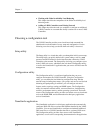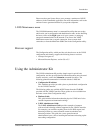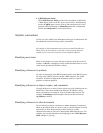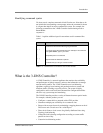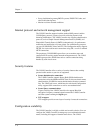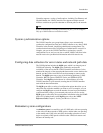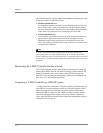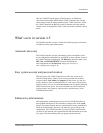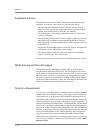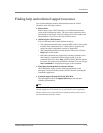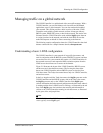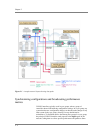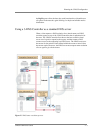
Chapter 1
1 - 10
Expanded statistics
The statistics screens on the 3-DNS Controller have been enhanced and
expanded. You can now view statistics for the following objects:
• The Detailed Wide IP Statistics screen, available from the Wide IP
Statistics screen, now displays information about virtual servers in the
context of the wide IP pools of which they are members.
• The Link Statistics screen displays information about any router links
you have configured.
• The P95 Billing Estimate statistics screen displays graphs of your actual
bandwidth usage compared to your purchased bandwidth if you have
links configured, or your network has both 3-DNS Controllers and Link
Controllers in it.
• The Internet Weather Map statistics screen now displays information for
both the data centers and the links in your network.
• The Disabled Objects statistics screen now displays these additional
objects: wide IPs, pools, and virtual servers.
For details on each of these screens, refer to the online help for that screen.
Multi-homing and firewall support
The 3-DNS Controller now supports multiple links to the Internet and
network address translations for firewalls. You can designate one or more
self IP addresses and translations for the controller itself, as well as for any
BIG-IP systems, host servers, or routers that are configured as part or the
controller’s network. For information on working with the self IP addresses
and network address translations, refer to the online help for the Self IP List,
which is available from the toolbar for each server type.
Security enhancements
You can now use the Setup utility to configure a remote LDAP or RADIUS
authentication server. With this feature, you no longer need to directly edit
configuration files to set up your LDAP or RADIUS authentication server.
This release of the 3-DNS Controller also expands the number of user roles
that you can assign to user accounts for the purpose of user authorization. In
addition to the standard Full Read/Write, Partial Read/Write, and Read-Only
access levels, you can now define which user interface an administrator uses
to access the 3-DNS Controller (the Configuration utility, the command line
interface, or the iControl interface). These user authorization roles are stored
in the local LDAP database on the 3-DNS Controller, and are designed to
operate in concert with centralized LDAP and RADIUS authentication.
For details on user authorization and managing user accounts, see Managing
user accounts, in Chapter 6, Administration and Monitoring, in the 3-DNS
Reference Guide.



